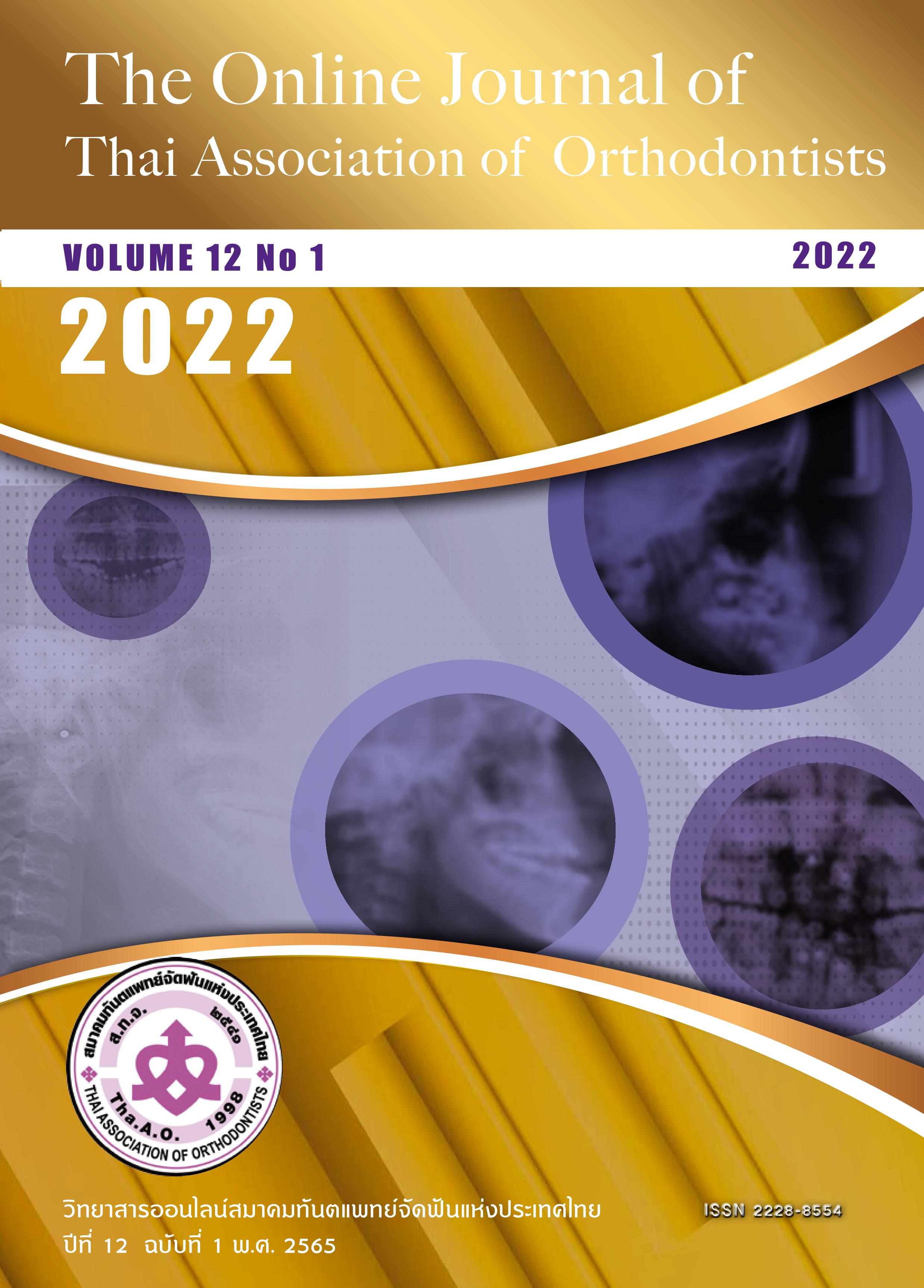The Uprighting Spring to Support an Anchorage During Canine Retraction in Class II Division 1 Malocclusion
Main Article Content
Abstract
Anchorage control in orthodontic treatment is of an important factor to achieve perfect occlusion,
especially in Class II division 1 malocclusion patients who need all extraction spaces for overjet retraction.
Objective: To study the effectiveness of the uprighting spring to enhance anchorage of posterior teeth during canine retraction. Materials and methods: 18 subjects (8 males and 10 females, mean age 21 years 7 months) with the upper first premolar extraction for canine distalization were participated. The anchorage control of upper posterior teeth was done by ligating the posterior teeth together. The uprighting spring will be placed at the second premolar of one side randomly (URS) whereas the other side had no uprighting spring (NURS). Canines were distalized with the force of 150 g for 4 months. Molar movement and rotation and canine movement were measured directly on study models. The change of molar angulation was evaluated from the cephalograph.
Results: Mean anchorage loss recorded from molar movement in URS and NURS was 0.31±0.18 mm and 0.78±0.35 mm, respectively. Anchorage loss of URS was significantly lesser than NURS (P<0.05), whereas the amount of canine movement in URS was greater than NURS significantly. There were molar rotation in both groups but no significant different. Molar forward tipping was found greater in NURS than in URS significantly.
Conclusion: The uprighting spring can enhance anchorage of posterior teeth effectively during canine retraction

